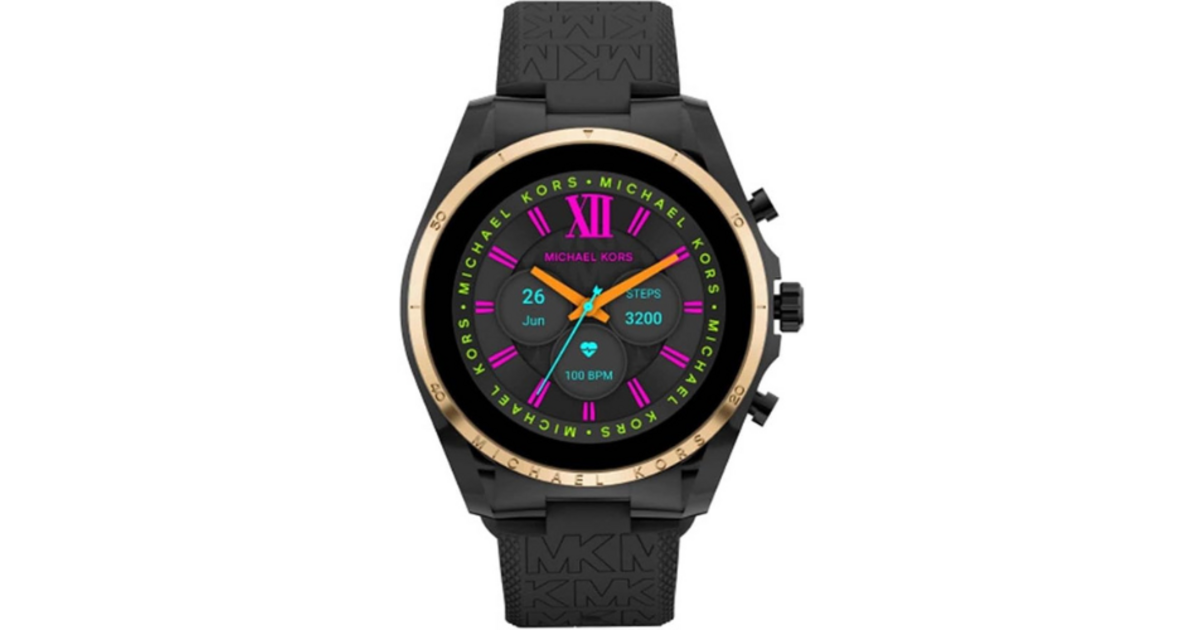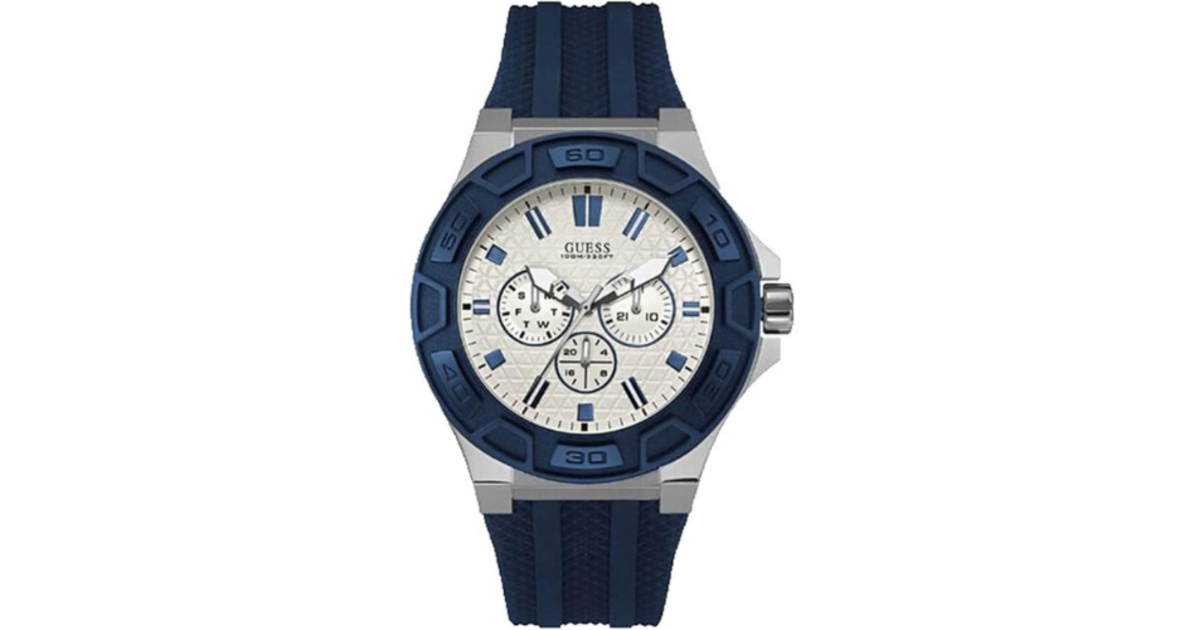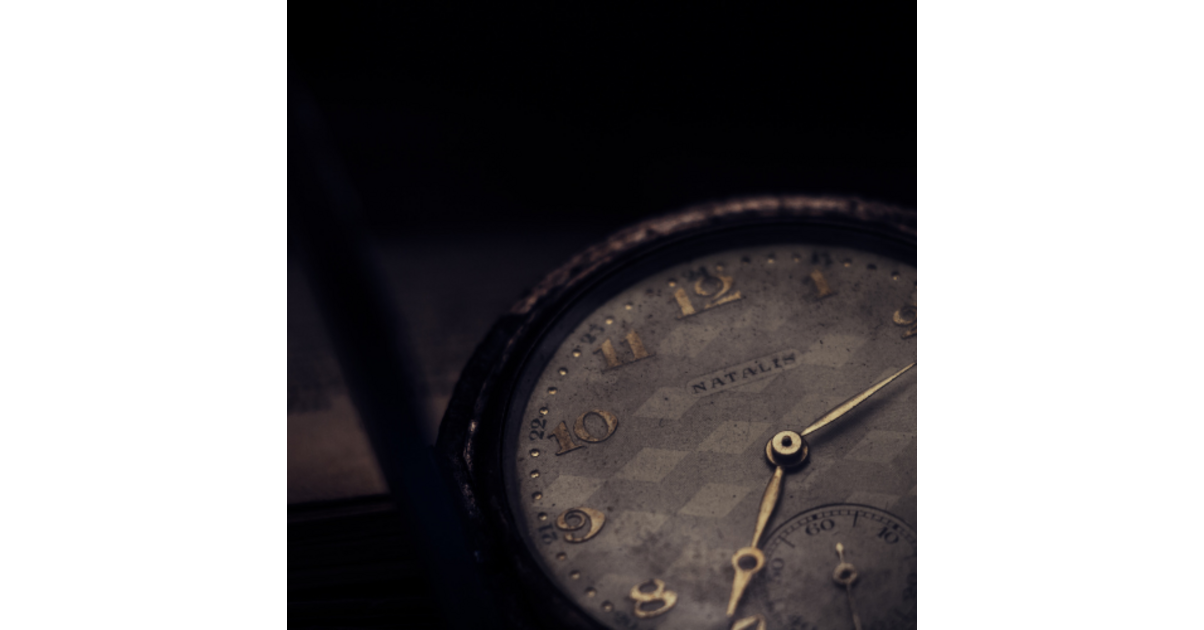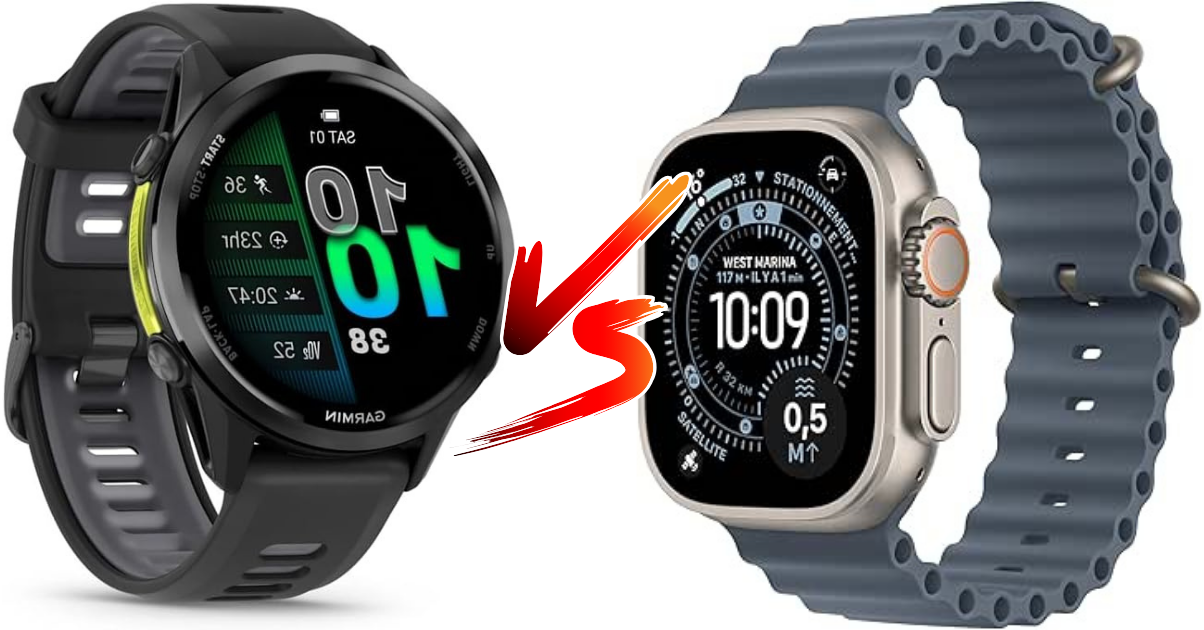Table of Contents
When fiction tells the time: 5 watches that have become legends on screen
Cinema has this rare power: to freeze a gesture, a style, a silhouette, and propel them into the collective imagination. A watch on the screen doesn’t just tell the time; it tells a story, draws a character, sets a look. From a diving tool to an Art Deco icon, the watch becomes a play partner, a silent accomplice of heroes and heroines. Here are five legendary pieces whose presence in the cinema has sealed the legend — models where watchmaking culture meets the grammar of the 7th art, and where each design detail finds its narrative resonance.
Rolex Submariner 6538 – James Bond’s second skin
Before being a symbol of success, the Rolex Submariner is a tool. On the wrists of Sean Connery from Dr. No (1962), the reference 6538 — large crown without shoulders, black lacquered dial, graduated bezel — imposes a language: brutally elegant efficiency. We see it sometimes on leather, sometimes on a military fabric bracelet that has become a “Bond strap” in the collective unconscious. Nothing ostentatious, everything is functional.
In the cinema, this watch does more than accompany Agent 007; it gives it tactile credibility. The Sub is the natural extension of a character who navigates between a tuxedo and a midnight swim. Result: the archetype of the tool watch shifts into pop legend. Decades later, every Submariner still wears the shadow of a white tuxedo, an acrylic glass beaded with salty drops, and a heroism that never blinks an eye.
Heuer Monaco 1133B – The blue square of Le Mans

1971. Steve McQueen in a Gulf suit immortalizes a blue square that seemed built for speed: the Heuer Monaco 1133B. Caliber 11 automatic chronograph, crown on the left, 39 mm waterproof case, petrol blue dial crossed with horizontal indexes — the watch is a visual dissonance that has become a signature. In Le MansMcQueen wants the truth from the paddocks: the Monaco sticks to the skin, soaks up gasoline and rubber, and prints an image that no one will forget.
The Monaco is distilled seventies audacity: a geometry that rejects the conventional roundness, a racing spirit that speaks to aesthetes as much as to mechanics. In the credits, it gains a double status: watchmaking icon and talisman of speed cinema, the echo of which still resonates in each reissue.
Seiko 6105 “Captain Willard” – The Breath of Apocalypse Now
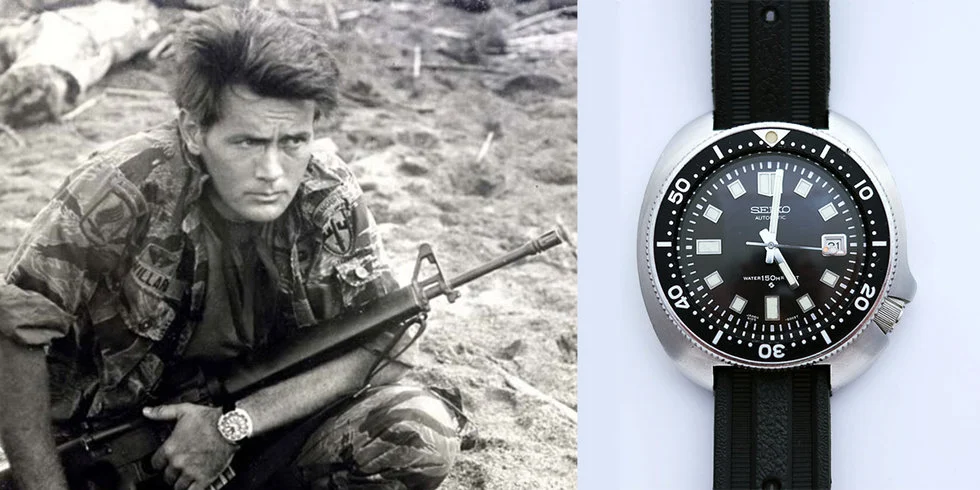
On the wrist of Martin Sheen (Charlie’s dad) in Apocalypse Nowthe Seiko 6105-8110/8119 is not an accessory: it is a piece of reality. Asymmetrical cushion case, protected crown at 4 o’clock, water resistance to 150 m, readability without fuss — the 6105 is built to survive humidity, mud, the unexpected. Nicknamed “Captain Willard” by collectors, it embodies the reliable tool in chaos, the watch that stays on time when the world turns upside down.
Its aura is due to this raw realism. On the screen, it doesn’t shine: it holds. This robust modesty has caught on, inspiring generations of Japanese divers with unstoppable value for money. In the history of watches and cinema, few pieces so clearly express the link between function and character.
Hamilton Khaki Field “Murph” – The beating heart of Interstellar
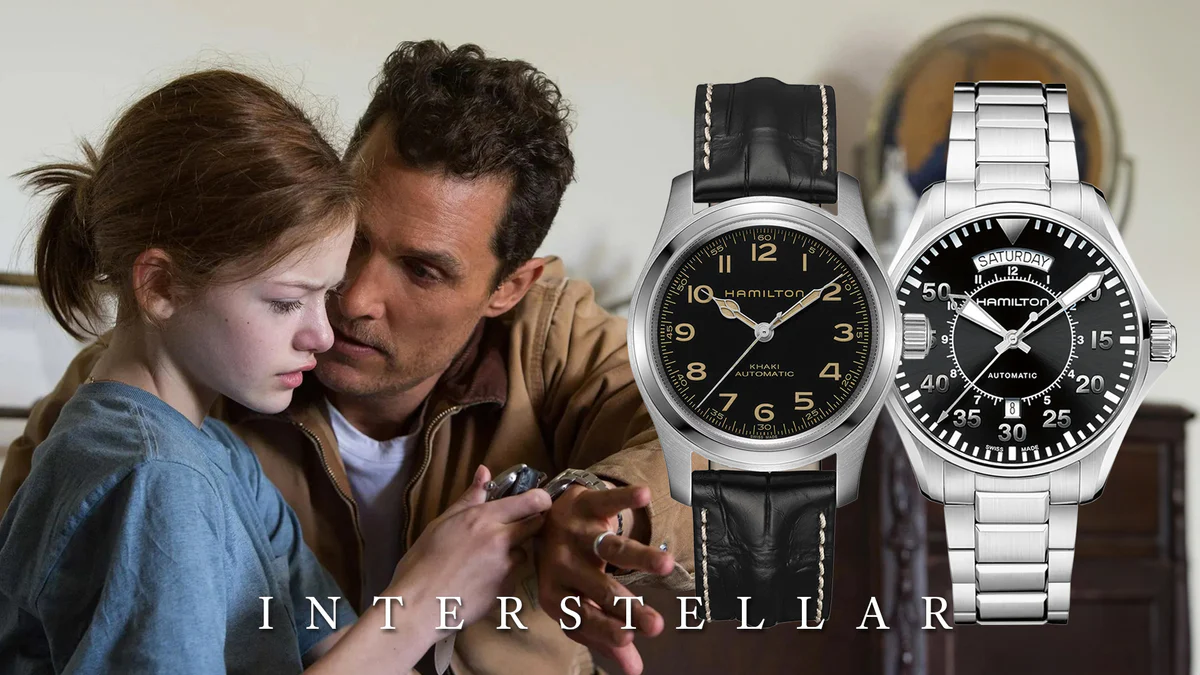
Rarely has a watch been as central to the story as the “Murph”. In InterstellarMurphy’s field watch transmits the impossible: a message in Morse code, through time and filial love. Hamilton designs a set accessory with military classicism – Arabic numerals, cathedral hands, legible sobriety – which becomes the emotional and mechanical pivot of the film.
The cultural triumph is immediate. At the request of the public, Hamilton markets an almost identical Khaki Field “Murph”, a discreet nod to Morse code. Proof that cinema can transform an accessible watch into a contemporary relic. Here, the watch is not an external sign: it is an internal symbol. A watch that measures hours, but also links.
Jaeger-LeCoultre Reverso – Bruce Wayne’s elegant mask
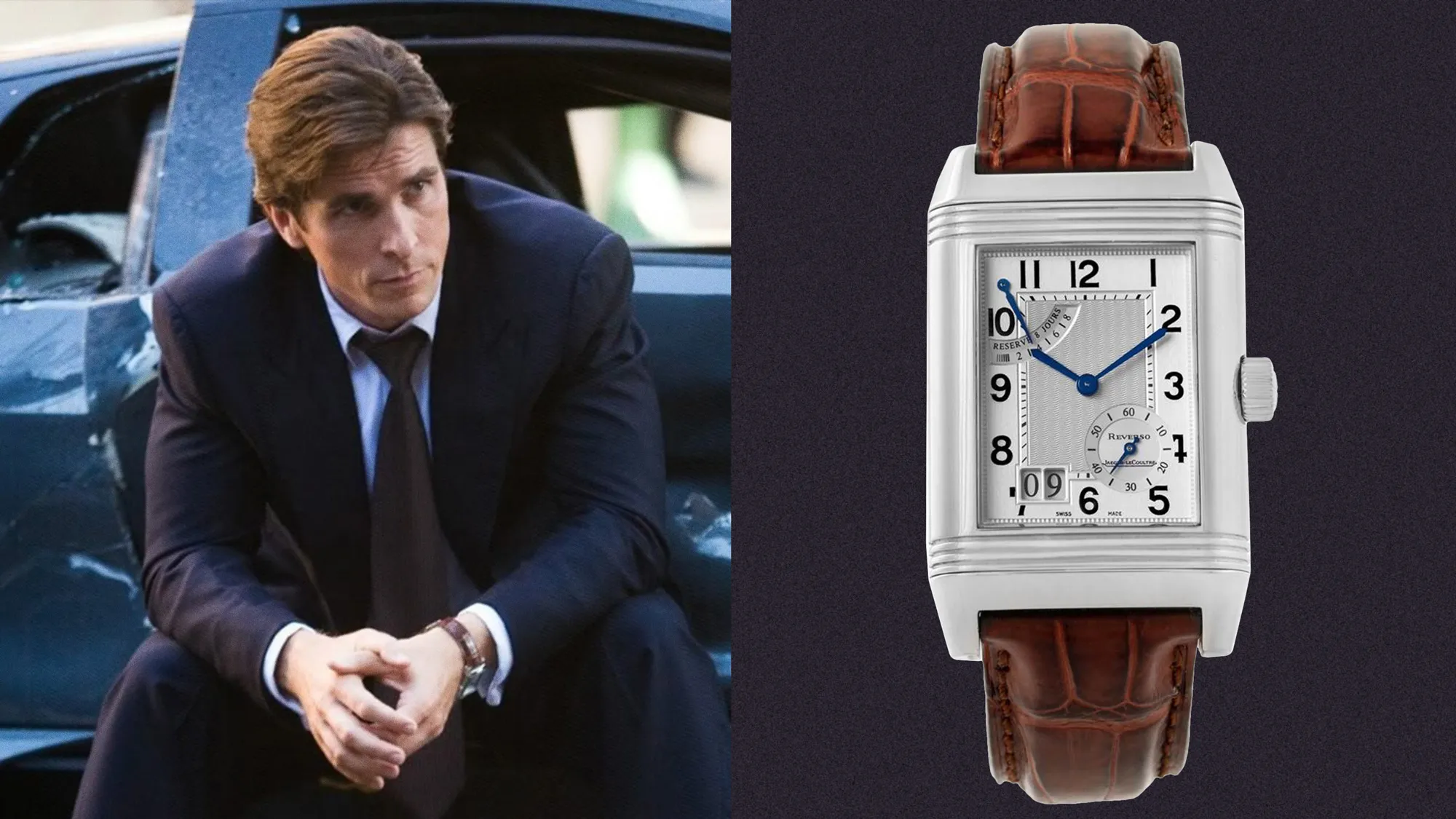
In Christopher Nolan’s rebirth of Batman, Bruce Wayne chooses the Reverso. This is no coincidence. Created in 1931 to protect the glass during polo matches, the Reverso rotates on itself, revealing or hiding its face. Art deco par excellence, it combines sharp angles and discreet refinement.
On Christian Bale’s wrist, the watch becomes a metaphor: front for the public billionaire, back for the nocturnal vigilante. The Reverso reminds us that beautiful watchmaking knows how to speak in symbols. She embodies an idea of luxury that whispers: a fine build under the cuff, a rotating gesture which, on screen, says everything about the duality of the character. A lesson in design and storytelling.
What these watches tell beyond the time
From Bond to Bruce Wayne, from McQueen to Murphy, these watches owe their aura not only to their presence on the screen. They crystallize an era, a design, a philosophy. Their power is to unite watchmaking culture – its inventions, its proportions, its materials – with the narrative ellipse of cinema. And when the two interact, the watch becomes more than an object: it becomes a persistent image, a fragment of collective memory.
- Codes readable on the screen: contrasting dials, iconic silhouettes, recognizable gestures.
- A strong story: innovative creation (Monaco), utilitarian heritage (Sub, 6105), narrative metaphor (Reverso, Murph).
- A match for the character: credible tool for the action, measured elegance for the style.
- A real posterity: reissues, nicknames, communities of collectors.
Honorable mentions
The list could grow longer with the black Hamilton Ventura of Men in Blackthe Tank de Cartier dear to the French actors of the New Wave, or the futuristic Seiko Giugiaro ofAliens. So much proof that cinema, more than any other popular art, knows how to reveal the personality of a watch. Because throughout the scenes, a watch not only accompanies an action: it sets the rhythm of a destiny, measures a tension, sculpts a style. And it is thus, between light and mechanics, that myths are born.
